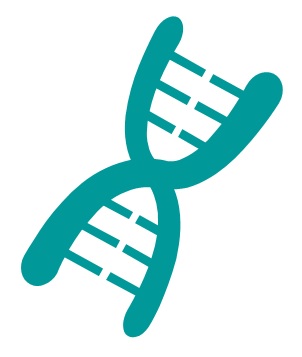OVA Peptides Pool
OVA peptides pool for ovalbumin-specific T-cells stimulation
Ovalbumin protein
Ovalbumin (OVA – UniProtKB – P01012),is a major glycoprotein of the egg white that is sufficiently large and complex to be mildly immunogenic. OVA is frequently used in immunology research to stimulate allergic reactions via:
- IgE-mediated food allergy animal models
- IgE-mediated disease models,like OVA-induced allergic asthma model
- Atopic dermatitis models
Chicken OVA is indeed a T-cell-dependent antigen,used as a model protein for the study of antigen-specific immune responses in mice.
SB-PEPTIDE Ovalbumin pool
The stimulation of antigen-specific T-cells with OVA peptides pool leads to the secretion of effector cytokines and activation markers’ up-regulation that allow the detection and isolation of antigen-specific T-cells in-vitro.
SB-PEPTIDE offers Ovalbumin pool composed of 94 15-mer sequences with 11 amino acids overlap,covering the entire sequence of the chicken ovalbumin.
OVA pool is 100% made in France with an average purity of peptides around 70%. The company ensures a strict control of production with batch-to-batch reproducibility.
OVA pool applications
SB-PEPTIDE Ovalbumin pool was developed for efficient stimulation of ovalbumin-specific T-cells in vitro. It represents an optimized mixture for stimulating CD4+ and CD8+ T-cells for various purposes,including:
- Detection and analysis of ovalbumin–specific effector/memory T-cells in PBMCs (visit our PBMC Isolation Protocol webpage)
- Isolation of viable ovalbumin–specific CD4+ T-cells that can be expanded for generation of T-cell lines
- Generation of ovalbumin–specific effector/memory T-cells from naive T-cell populations
- Pulsing of antigen-presenting cells (APC)
OVA peptides sequences are presented here and can be purchased individually.
SB-PEPTIDE OVA pool is sold in various formats,with a capacity of 2 ,5 x 108 cells for 15 nmol/peptide. Customizations and bulks are available upon requests.
OVA immunodominant epitopes are available: OVA 257-264 and Ova (323-339)
Technical specifications
 |
Sequences: 94 peptides from chicken ovalbumin protein – OVA Peptides Pool sequences |
 |
Purity : Crude (~70%) |
 |
Made in France |
 |
Counter-Ion : TFA Salts |
 |
Delivery format : Freeze dried in propylene 2 mL microtubes |
 |
Other names : OVA-94,OVA pool T-cells activator |
 |
Endotoxin free |
 |
Bulk available,customization available,individual peptides available |
OVA Peptides Pool price
| Product catalog | Size | Price € HT | Price $ USD |
| SB136-15NM | 15 nmol (~25µg/peptide) | 127 | 158 |
| SB136-60NM | 60 nmol (~100µg/peptide) | 440 | 550 |
| SB136-1015NM | 10 x 15 nmol | 880 | 1100 |
| SB136-5015NM | 50 x 15 nmol | 3300 | 4125 |
References
Trends in Immunology. 20001 Dec 01;22(12):658-659. doi: https://doi.org/10.1016/S1471-4906(01)02121-4
In vivo activation requirements for T cells
Studies of transformed cell lines and long-term T-cell clones have established a consensus pathway,in which signals from the T-cell receptor (TCR) and costimulatory receptor CD28 are necessary to activate several transcription factors that,in turn,bind to the interleukin-2 (IL-2) promoter and drive transcription of the gene encoding IL-2. As part of this model,it has been proposed that the TCR- and CD28-mediated signals can cooperate,through their effects on Vav1 and PKC-θ,to phosphorylate and activate JNK,which,in turn,phosphorylates Jun-family proteins and enhances their transcription-promoting activity. Although in vitro approaches have played a crucial role in defining the potential signaling pathways in activated T cells,it is unsurprising that there are a number of caveats and discrepancies in this activation model when applied to nontransformed and naive T cells. Now,a new study describes elegantly a sensitive method that will allow the study of signal-transduction events in antigen-specific T cells under conditions that mimic the microenvironmental conditions for T-cell activation in physiological settings.
J Exp Med. 1989 Mar 01;169(3):603-12. doi: 10.1084/jem.169.3.603
Induction of ovalbumin-specific cytotoxic T cells by in vivo peptide immunization
CTL recognize peptide forms of processed,foreign antigens in association with class I molecules encoded by the MHC and are usually directed against endogenously synthesized « cellular antigens , » such as those expressed by virus-infected cells. In vitro studies have shown that small exogenous peptides can directly associate with class I molecules on the cell surface and mimic the target complex derived by intracellular processing and presentation. We have recently generated OVA-specific,H-2Kb-restricted CTL by immunizing C57BL/6 mice with a syngeneic tumor line transfected with the OVA cDNA. The CTL recognize the OVA transfectant E.G7-OVA and the synthetic peptide OVA258-276,but fail to recognize the native protein. We reasoned that given the potential for direct peptide/class I association observed in vitro,OVA258-276 may induce CTL after in vivo priming. However,we found that this is not the case. OVA258-276 and peptides of increasing lengths up to OVA242-276 and OVA242-285,which are all able to form the target complex in vitro,are inefficient at priming E.G7-OVA-specific CTL responses after intravenous injection. This is also true for both native and denatured OVA. In contrast to these results the synthetic peptide OVA229-276 corresponding to a peptide in a partial tryptic digestion of OVA can efficiently prime C57BL/6 mice in vivo after intravenous injection. This peptide elicits CTL that appear identical to those derived from animals immunized with syngeneic cells producing OVA endogenously. These results are discussed in terms of separate class I and class II antigen presentation pathways and the ability of only certain,exogenous antigens to enter the cytoplasmic,class I pathway.
J Exp Med. 1988 Jun 01;167(6):1767-79. doi: 10.1084/jem.167.6.1767
Induction of cytotoxic T lymphocytes by primary in vitro stimulation with peptides
Antigen-specific cytotoxic T cells can be generated by primary in vitro stimulation of spleen cells from C57BL/6 mice with appropriate peptide fragments. This response can be elicited without prior in vivo immunization. Chicken OVA fragmented with either cyanogen bromide (CN OVA) or trypsin (T OVA) was used as a source of mixed peptides. A synthetic peptide,NP365-380,representing the sequence 365-380 from influenza virus A/PR/8 nucleoprotein,was also used,since this contains the main determinants recognized by CTL generated from H-2b mice infected with A/PR/8 virus. The primary in vitro cytotoxic T cell response was peptide specific,since targets were lysed only in the presence of appropriate peptide antigens. Native OVA could not elicit primary effectors in vitro nor could it sensitize targets for lysis by OVA digest-specific CTL. A synthetic peptide corresponding to residues 111-122 within the OVA sequence could sensitize targets for lysis by effectors induced against T OVA. Effectors generated by in vitro stimulation were CD8+,CD4-,and H-2Db-restricted for NP365-380 and T OVA recognition. CN OVA-specific effectors were also CD8+,CD4-,but surprisingly,were able to lyse a range of H-2-different targets in an antigen-specific manner. These effectors failed to lyse a tumor line that does not express class I MHC molecules. This broad MHC restriction pattern was also apparent at the clonal level. In all cases,the antipeptide CTL generated by primary in vitro stimulation were inefficient in lysing target cells expressing endogenous forms of antigens,such as influenza virus-infected cells or cells transfected with the OVA cDNA. However,cytotoxic T cell lines generated in vitro against the NP365-380 peptide did contain a minor population of virus-reactive cells that could be selectively expanded by stimulation with A/PR/8-infected spleen cells. These results are discussed in terms of class I-restricted T cell stimulation in the absence of antigen processing by high surface densities of peptide/MHC complexes.
